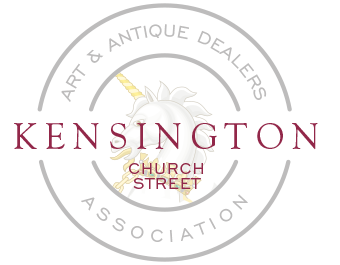Showcasing Regency period furniture and accessories in styles inspired by the taste-leading Prince of Wales, who became Regent from 1811-1820. His connoisseurship set trends in design and his patronage played a key role in the booming manufacture of British luxury goods. Many of the pieces showcased here are made from exotic woods (mahogany, rosewood etc), from far-flung territories newly-arriving in Britain by the late 18th century, and demonstrate the extravagant styles and taste of this stimulating period in British design history.
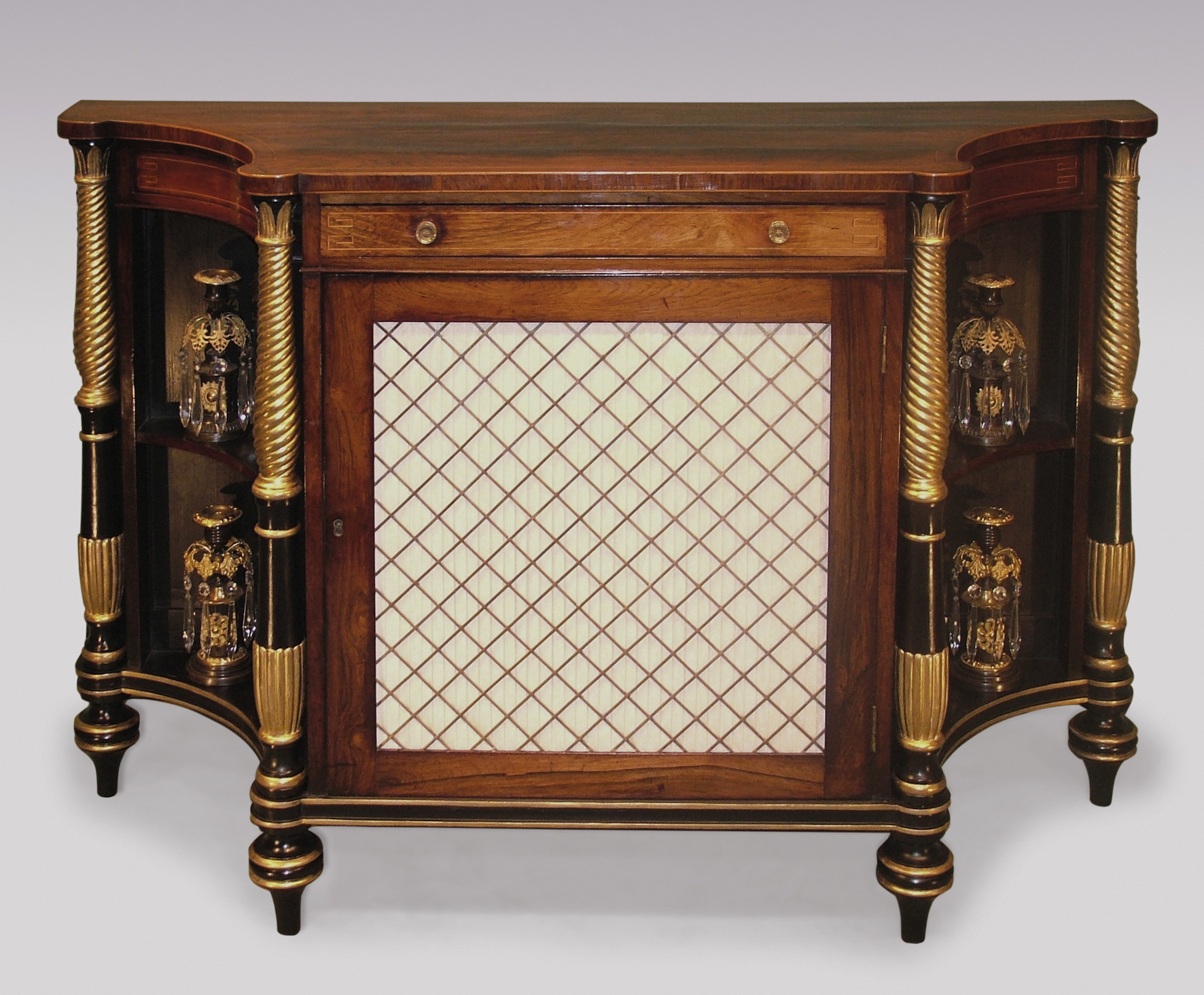
Regency Period Rosewood, concave shaped Chiffonier with spiral gilded columns
Boxwood strung throughout, having concave top with rounded corners, above frieze drawer and central silk pleated brass grille door, flanked by carved giltwood and black painted spiral twist vase-turned columns. The piece with concave open shelves to the sides, raised on turned toupie feet.
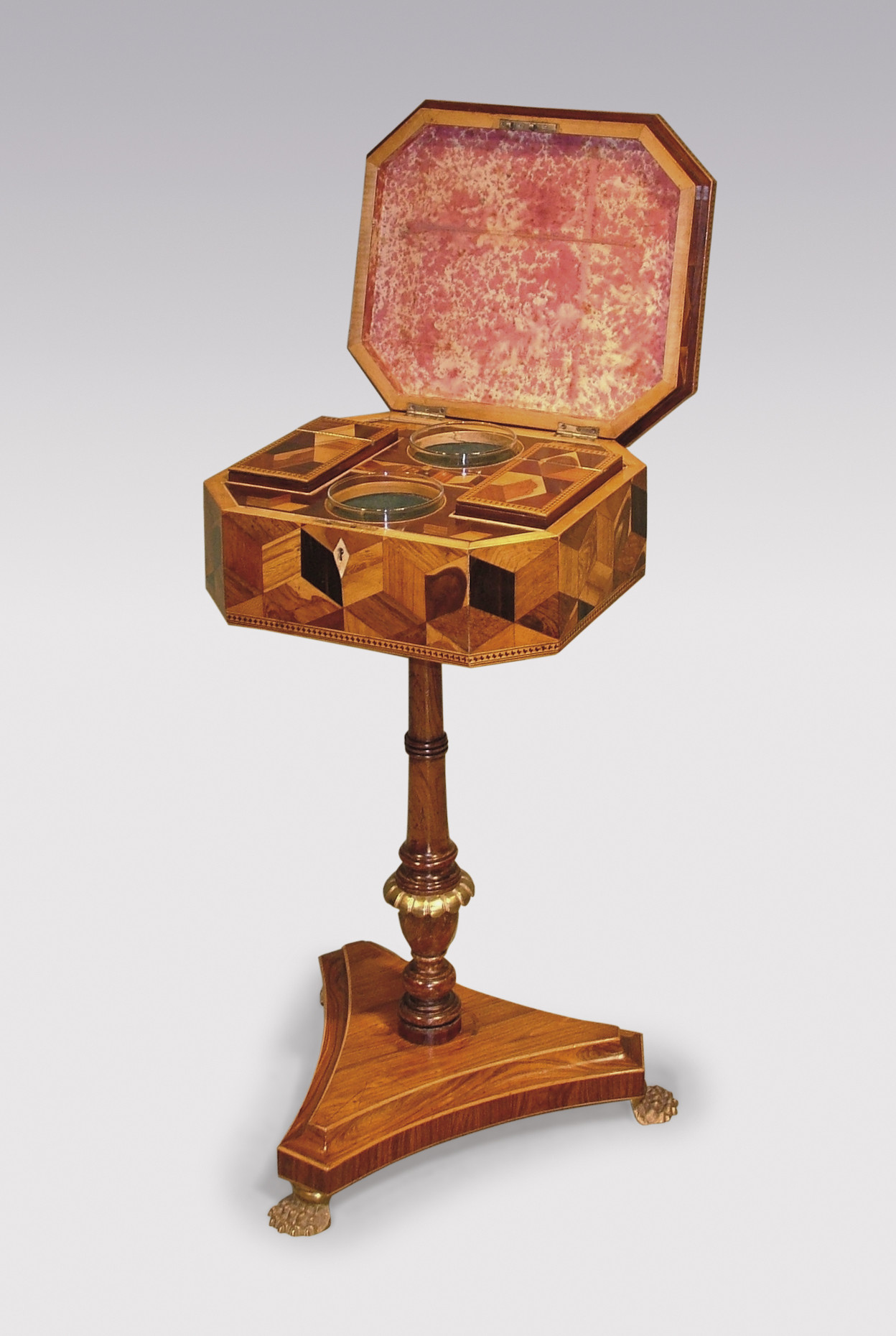
Unusual Regency parquetry inlaid Kingwood Teapoy with original Interior
Parquetry inlaid throughout, having boxwood and ebony strung canted corner top, retaining original interior, supported on solid kingwood turned stem, ending on triangular concave platform base, ending on original brass paw feet.
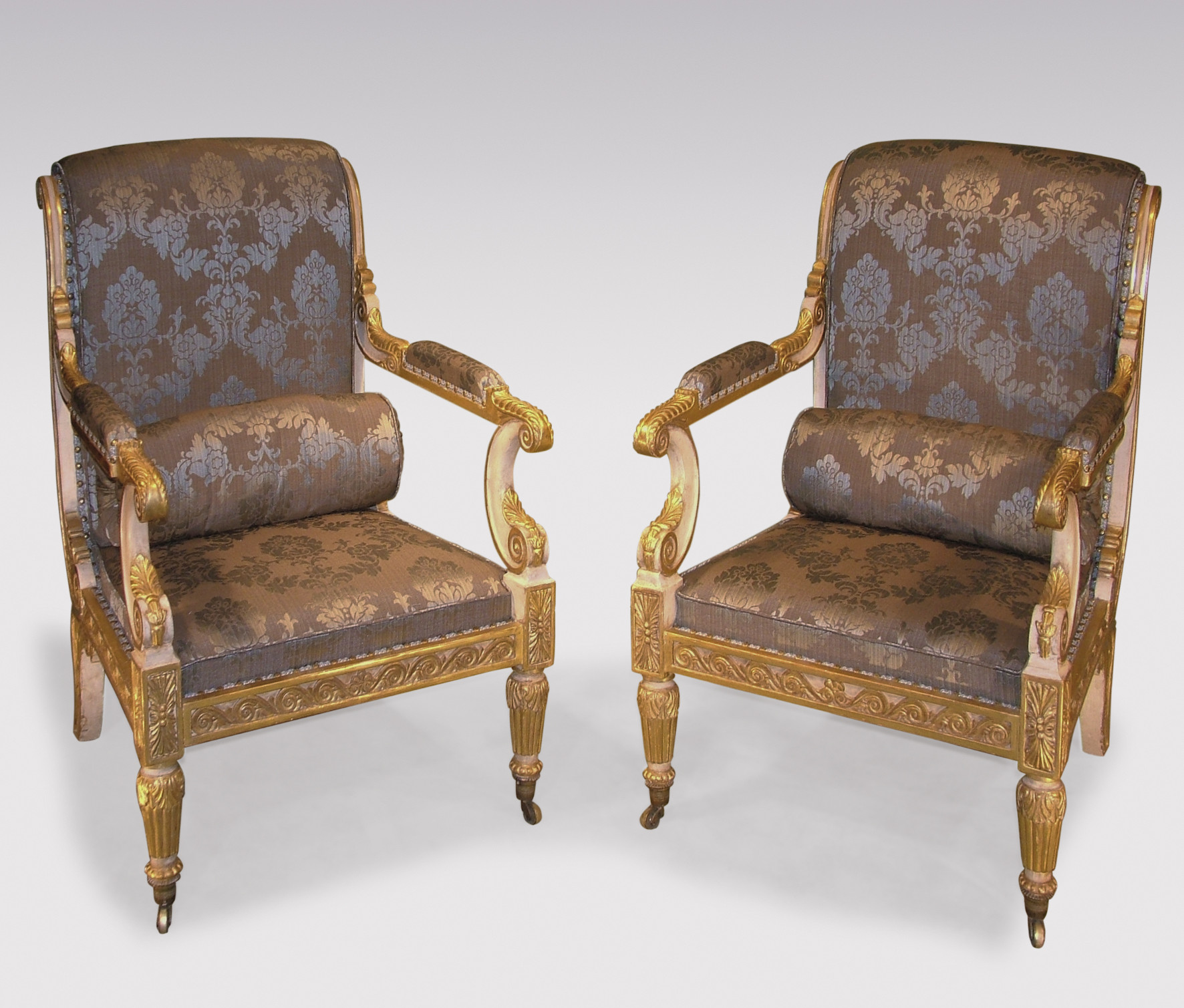
Important Pair of Regency period white painted and carved giltwood Armchairs
In the manner of Morel and Hughes, acanthus and scroll carved throughout. The Chairs with roll-over backs and stuff-over seats, above Vitruvian scroll frieze, supported on reeded tapering legs with paterae, ending on original brass castors. Upholstered in an attractive blue/grey Damask material.
Additional Information:
Morel and Hughes (fl: 1805 - 1826) and Morel and Seddon (fl: 1826 - 1832) were cabinet makers to King George IV, King William IV and Queen Victoria. Originally Nicholas Morel served his apprenticeship with Henry Holland and Dominic Daguerre before opening his business with Robert Hughes in 1805. The business was situated at 13 Great Marlborough Street, London. The company suppled furniture for the Prince Regent at Brighton Pavilion and Carlton House.
After Robert Hughes' departure Morel was joined by George Seddon and the company became known as Morel & Seddon. They worked exclusively for King George IV at Windsor Castle. The collection today can be seen at both Buckingham Palace and Windsor Castle. George's brother Thomas joined the company in 1830 and Morel retired after 1831 when the company became known as Seddon & Sons. The company closed in 1868.
These chairs bear a strong resemblance to the Louis XVI style which was extremely fashionable during the reign of George IV. Although influenced by Morel and Seddon these examples depict a lightness in design to the more flamboyant pieces created for the King at the Royal Residences.
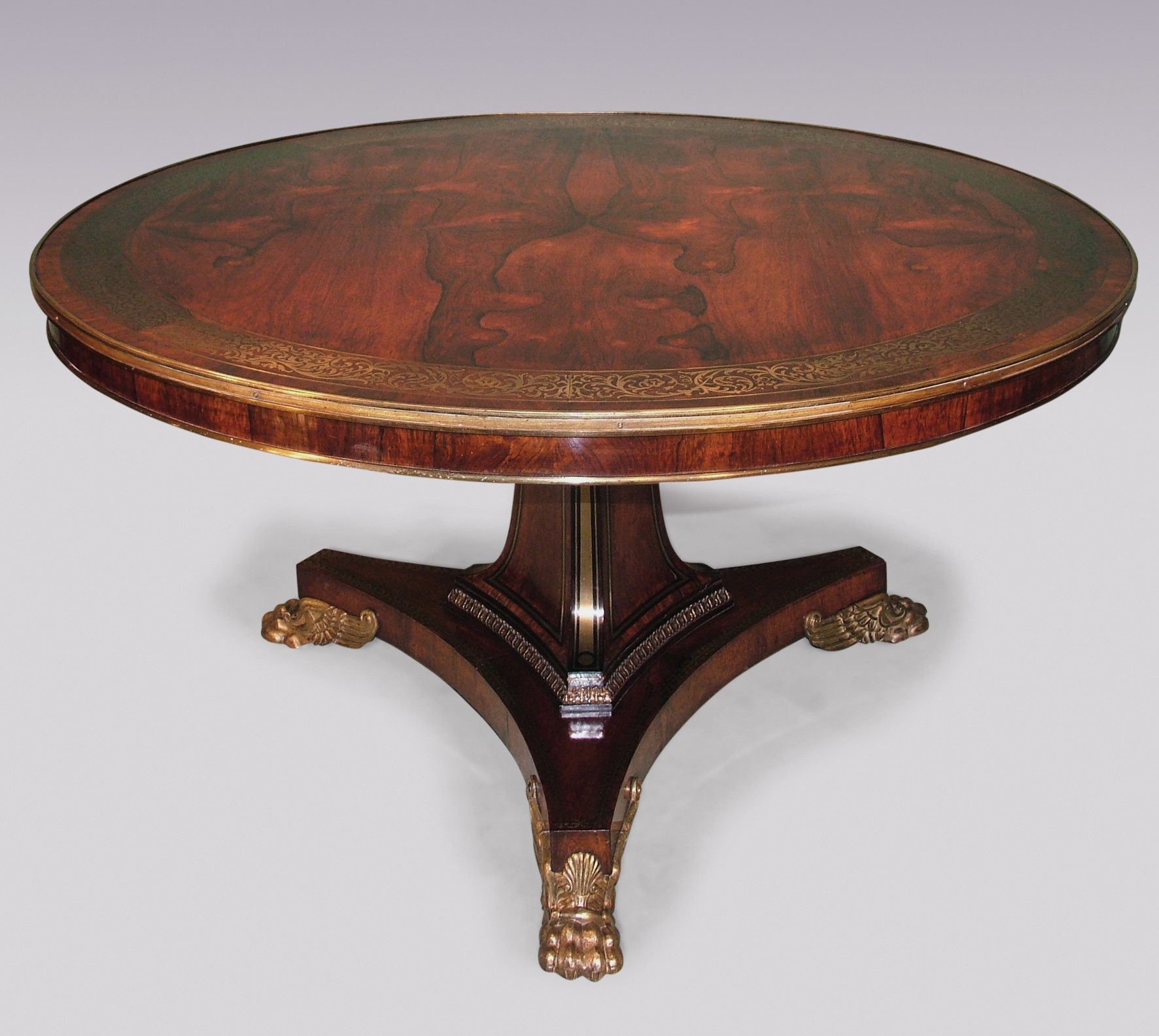
Important Regency Period Rosewood Centre Table with fine brass inlay and mount
Having intricate brass inlaid and brass edged circular top, raised on ebony and brass panelled triangular concave stem, supported on brass inlaid concave platform base ending on original gilt brass lion's paw feet with scrolled wing and shell decoration.
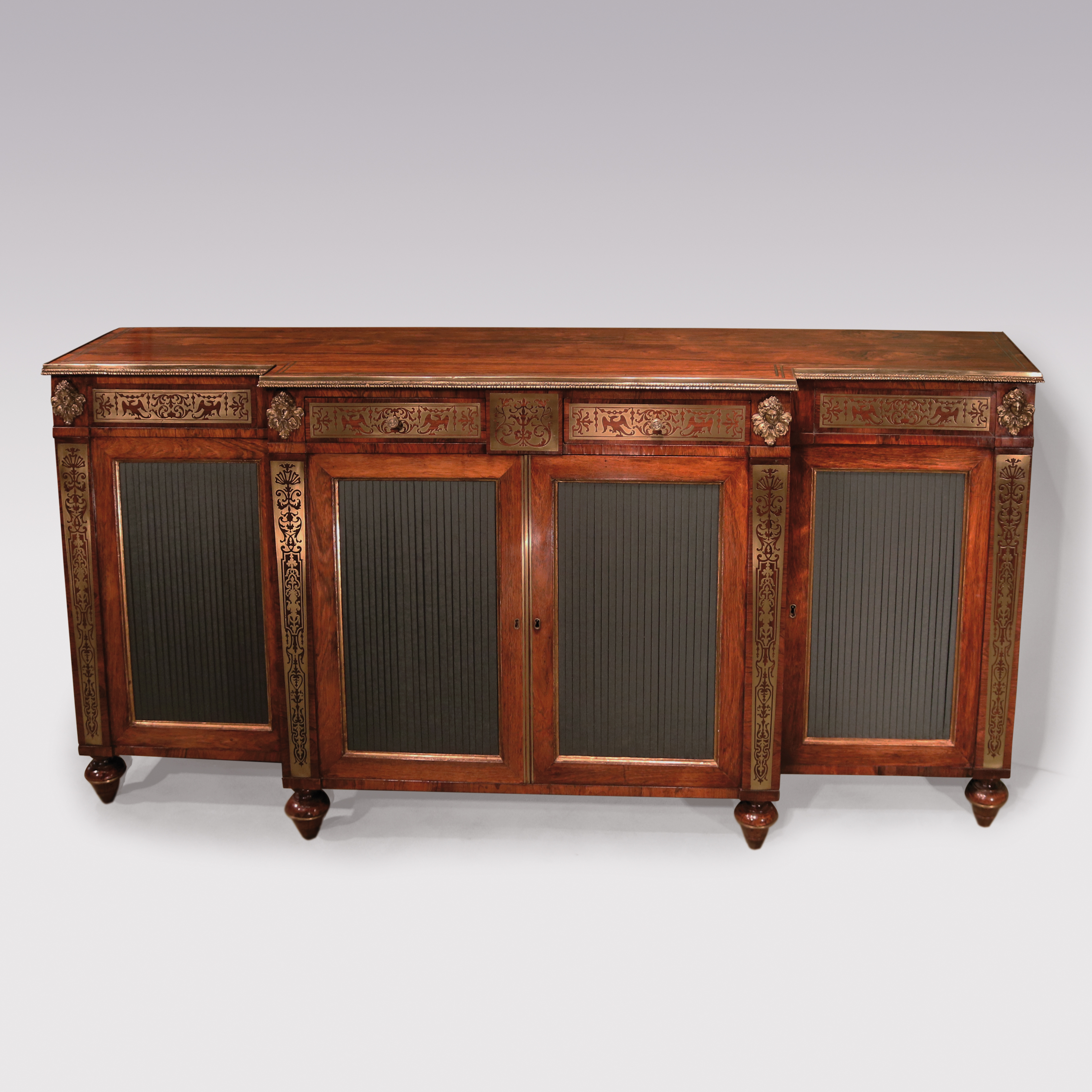
Regency Rosewood and Brass inlaid Chiffonier, after Designs by John Mclean
An important early 19th century Regency period rosewood and brass inlaid breakfront chiffonier, having mirrored galleried upper part with fretwork and column sides, above gilt brass edged top and frieze drawers with inlaid swag and phoenix panels, flanked by gilt brass female heads. The chiffonier having four silk pleased doors, flanked by tapering brass panels, ending on toupie feet. Depth at centre: 16 ins (41cms). Further information: This Chiffonier, with its fine quality cabinet work and distinctive mounts, resembles the cabinet work of John McLean, see Simon Redburn, 'John McLean and Son', Furniture History, (Vol. XIV 1978, pp. 31-7). Redburn illustrates a number of secretaire pieces by McLean that illustrate their development from the simpler more elegant examples, of which this is one, to the over embellished later pieces. The firm of John McLean and Son advertised that it specialised in 'Elegant Parisian Furniture' and although the 6 surviving pieces that bear his trade label are undoubtedly English, they do owe much to Gallic influence not only in their design, but also in their lavish use of metal mounts. McLean seems to have worked primarily in rosewood but Redburn states that he certainly worked in other mediums. He comments that, 'perhaps the most dominant feature of McLean's decoration is his lavish use of metalwork in cast and chased brass, which is gilded and lacquered. The actual cabinet work is of high order, the pieces being meticulously finished, both externally and internally, in the English manner'. The firm supplied furniture for the Earl of Jersey for Middleton Park, Oxford and fine recorded labelled pieces of furniture would indicate that McLean had a considerable business of some importance at a highly competitive time in English cabinet-making. The reputation of firms such as Gillows of Lancaster and Chippendale are well known due the preservation of their detailed drawing and estimate books. However, the Directories of the period contain many entries for cabinet-makers whose importance has been obscured due to the lack of documentation and the dispersal of important collections. Thomas Sheraton's 'Cabinet Dictionary' in 1803 mentions, in reference to a 'Pouch Table', a 'Mr. M'Lean in Mary-le-bone street, near Tottenham court road, who finishes these small articles in the neatest manner'. This acknowledgement is accompanied by McLean's name in the list of Master Cabinet-Makers. Further Information: This Chiffonier, with its fine quality cabinet work and distinctive mounts, resembles the cabinet work of John McLean, see Simon Redburn, 'John McLean and Son', Furniture History, (Vol. XIV 1978, pp. 31-7). Redburn illustrates a number of secretaire pieces by McLean that illustrate their development from the simpler more elegant examples, of which this is one, to the over embellished later pieces. The firm of John McLean and Son advertised that it specialised in 'Elegant Parisian Furniture' and although the 6 surviving pieces that bear his trade label are undoubtedly English, they do owe much to Gallic influence not only in their design, but also in their lavish use of metal mounts, (see Redburn, ibid., p.33). Rich, solid, well figured mahogany has been chosen on the side cabinet very much in the Empire style and although McLean seems to have worked primarily in rosewood, Redburn states that he certainly worked in other mediums. He comments that, 'perhaps the most dominant feature of McLean's decoration is his lavish use of metalwork in cast and chased brass, which is gilded and lacquered. The actual cabinet work is of high order, the pieces being meticulously finished, both externally and internally, in the English manner'. The firm supplied furniture for the Earl of Jersey for Middleton Park, Oxford and fine recorded labelled pieces of furniture would indicate that McLean had a considerable business of some importance at a highly competitive time in English cabinet-making. The reputation of firms such as Gillows of Lancaster and Chippendale are well known due the preservation of their detailed drawing and estimate books. However, the Directories of the period contain many entries for cabinet-makers whose importance has been obscured due to the lack of documentation and the dispersal of important collections. Thomas Sheraton's 'Cabinet Dictionary' in 1803 mentions, in reference to a 'Pouch Table', a 'Mr. M'Lean in Mary-le-bone street, near Tottenham court road, who finishes these small articles in the neatest manner'. This acknowledgement is accompanied by McLean's name in the list of Master Cabinet-Makers.
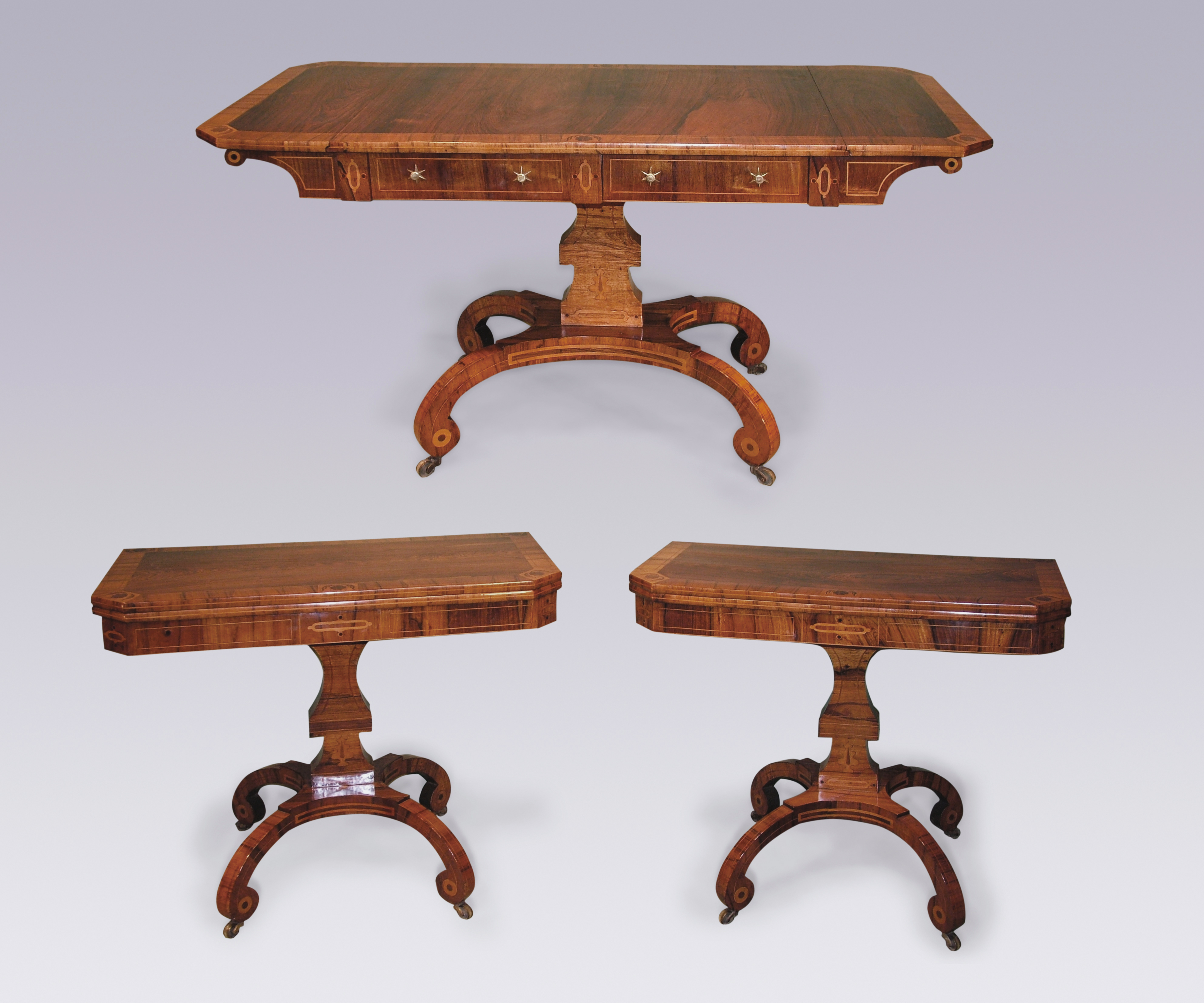
Suite of Regency rosewood satinwood banded and inlaid Drawing Room Furniture
An important suite of Regency period drawing-room furniture comprising sofa table and pair of card tables all veneered in rosewood and boxwood line inlaid throughout, having crossbanded canted cornered tops with satinwood flower inlaid panels. The tables, having unusual oval inlay to the friezes raised on inlaid square vase columns and platform and scroll umbrella bases ending on original brass castors. Flaps up: 55ins (140cms).
